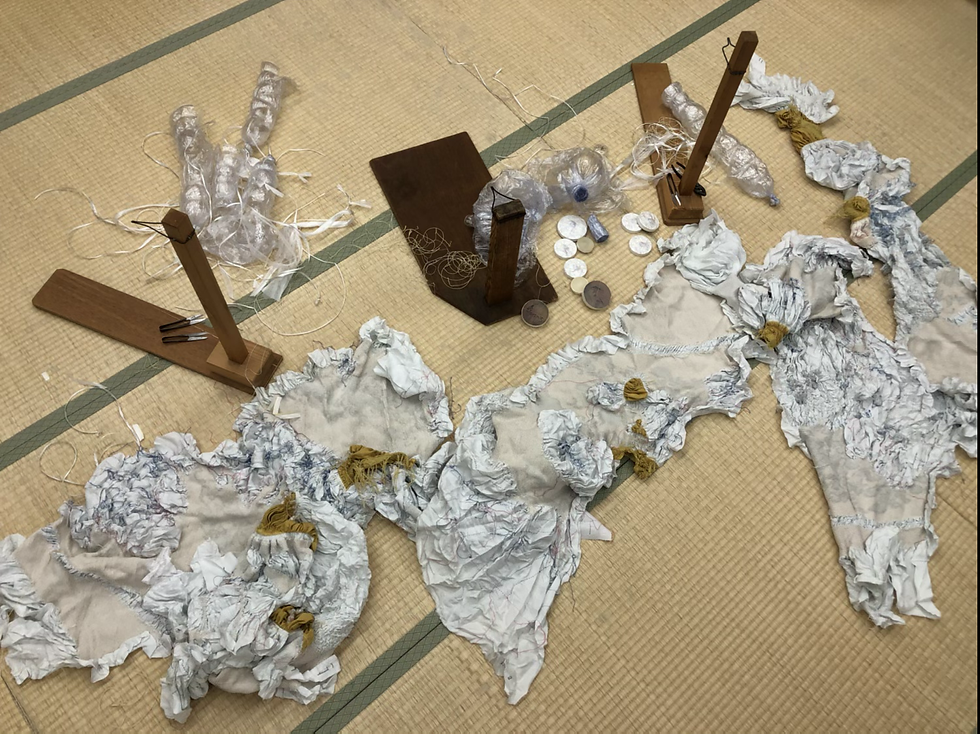絞り染め神奈川沖浪裏#4 The great wave off Kanagawa
- 京都絞り工芸館
- 2020年9月19日
- 読了時間: 2分
更新日:2020年10月2日
*written in English below
前回の絞り染め神奈川沖浪裏#3では、船部分の染色工程を紹介しました。
今回の#4ではその染め上がり生地を解いていきます!
In the previous article #3, the process of dyeing the ship part was explained. The dyed fabric is untied in this article #4.

写真は染め上がり、解き前の写真です。
The photo shows the dyed fabric not yet untied.
絞り染めの工程は全て分業です。絞る際に使用する糸などを解く作業も長年の経験が必要となる重要工程です。解く際の力の入れ具合、ハサミの使い方、極力生地に負担をかけないように解きます。責任重大、失敗は許されません!
The shibori process is all division of labor. The work of untying the threads used for tying is also an important process that requires many years of experience. How much force is applied, the way of how to cut threads with scissors, untie the thread, being careful not to tear the fabric. A big responsibility, failure is not allowed!
様々な解き場面 / Various untying scenes
また今回、逆帽子絞りで生地の広範囲を防染しているため、多くのビニールが使用されています。薄い薄いビニール(0.03mm)を6枚重ねているため、重なり合っている部分は硬い1つの大きなビニールの塊となります。映像でも確認できます。
Also this time, many vinyl sheets are used because the fabric is resist dyed over a wide area using the saka-boushi technique. Since 6 thin thin vinyl sheets (0.03mm) are layered, the overlapping part becomes one large solid vinyl block. You can check it in the video.

解き始めはまだまだ散らかっていませんが、全部が解き終わると糸やらビニールで大変なことになっています(笑)
It is not cluttered at the beginning, but when it's all finished, the floor is as you can see threads and vinyl plastic.


解き終わった生地6枚を並べてみました。
Six pieces of untied fabric lined up in a row.
#4はここまでです。
次回#5では波の青部分を染めるために、もう一度、逆帽子絞りやタコ帽子絞りで生地を絞ります。
This is the end of #4.
Next time, in #5, in order to dye the wave part with blue, the fabric is tied again with the Saka-boushi shibori technique and the Tako-boushi shibori technique.
続く
To be continued



コメント